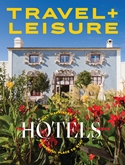The Decani church is one of the largest Serbian medieval edifices. Its leght exceeds 36 meters, the width is 24, and the dome reaches the height of 29 m. At the eastern end of the central space there is a large apse, whereas two small ones belong to the prosthesis and diaconicon respectively. There are five naves, the middle one being the widest and domed with the support of four piers. The aisles have their own parecclesions with the apses eastward. The narthex is tripartite, somewhat lower and narrower than the nave. Each nave has three bays. The ribbed vaults rest not only on pilasters but also on four octagonal piers made of marble in the middle of the narthex. The church was built on marble slabs in three colors. Its sophisticated architecture harmoniously blends the western, Romanesque and Gothic movements with the eastern, Byzantine style, keeping the tradition of the Serbian arts.

In the Church of Christ Pantocrator is found the most ornate and best preserved sculpture in the Romanesque spirit, in the whole Serbian medieval art. The west portal shows the temple's patron Jesus Christ on the throne and with two angels. The lunette over the southern portal represents the baptism of Christ and contains a carved inscription about the monastery's foundation. Above the north portal there is a foliation in the form of a cross. The jambs and the capitals of the adjacent engaged columns on all portals have floral ornaments, while the north and west ones also have carvings on the shape of centaurs and dragons. Over the west portal, there are also free-standing sculptures of lions and gryphons. The handsome two-light and three-light windows add to the overall effect of luxurious ornamentation.
The painting works took fifteen years and was carried out by several groups of the best Serbian artists. The altar space has the common representations of the Adoration of the Lamb and the Communion of Apostles. Apart from the conventional scenes, several series of paintings in the nave illustrate the history of Christianity. The heigher registers of the subatomic space represent the Festival Cycle, whereas the lower ground-lines contain svenes from the life of Christ, his miracles, morals and the Passion. Follow the scenes from the Virgin's life and her Akathistos Hymn. A separate row of frescoes is devoted to St. John the Forerunner, St. Demetrius and St. Nicholas. Moreover, there are illustrations of the Acts of the Apostles and the Old Testament themes. On the vaults of the narthex the Seven Ecumenical Councils are painted. The west wall there depicts the Genealogy of the Nemanjic family, beginning with saintly Stefan Nemanja. The rest of the Decani narthex is mostly illustrated by the scenes that follow the Calendar. The founders and the members of their families have been portrayed on several places, so has Chancellor George, the one to be thanked for the frescoes in the narthex. There are five portraits of Emperor Dusan and four of Stefan Decanski. In terms of the total area painted and the number of scenes and figures depicted, Decani certainly leads among the fresco-painted entities of the medieval Serbian arts. Since the artists were many, one can see unevenness in style and artistic quality.
The treasury of the Decani monastery is the best-preserved one within the Serbian cultural heritage in terms of number of items, artistic achievements and historical endurance. There is also one whole gallery of icons dating back to the XIVth to XIXth century.
